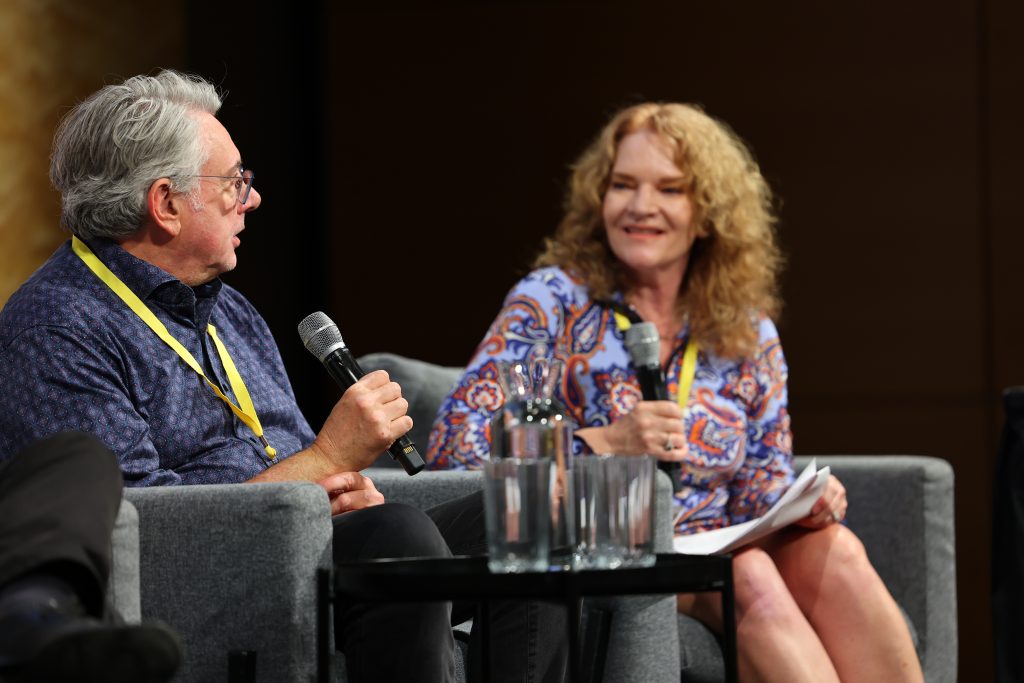How ‘genetic scissors’ are helping researchers identify new drug targets for child cancers
By understanding how genetic mutations impact cancer growth and using cutting edge technology to alter that process, research by Luminesce Alliance aims to advance novel drug therapies for paediatric cancers.
How can we interrupt the growth of cancer cells with new and more targeted drugs to treat cancer in children? This question is central to the research of Associate Professor Paul Ekert, Deputy Director, Research Themes, at Children’s Cancer Institute, where he is also the Translational Tumour Biology Group Lead.
A clinical scientist with over 25 years’ experience in paediatrics and cancer research, Ekert is currently conducting work supported by Luminesce Alliance, with funding assistance from the Office for Health and Medical Research. The research is using genomic analysis to shed light on the location, regulation, features, structural variations and function of genes linked to childhood cancer.

Identifying proteins linked to cancer
Our genes contain segments of DNA, (deoxyribonucleic acid) which carries the genetic code for the entire body. They also make RNA (ribonucleic acid), which can help turn genes on and off, manage protein production and control cell behaviour. “In our research we are looking to change this sequence, by altering the middleman – the RNA – so that it stops making a specific protein or produces less of it,” Ekert explains. “We then check whether the cancer cells linked to that protein are less able to grow or replicate. If so, we know that the protein is a good one to target with a drug that has the same effect.”
Proteins are the main target of most drug treatments, because they carry out the gene’s instructions. “Computer modelling is helping us to fast-track identification of proteins that have the right shape to be good candidates for cancer treatments,” says Ekert. “The ‘right’ shape means that a targeted drug can dock in the grooves on the surface of the protein, to inactivate it.”
Studying genetic mutations and tumour samples
In the lab, Ekert and his team are modelling tumour cells with a certain genetic change they are interested in. Their aim is to identify existing drugs or potential new drugs that impact specific proteins involved in cancer growth, to slow or prevent cancer growth in children. Their team is one of the only groups in the world conducting this kind of research in paediatric cancers. The research also involves the use of tumour samples from children who have been diagnosed with cancer and are registered with the ZERO Childhood Cancer Program, led by Children’s Cancer Institute and Kids Cancer Centre at Sydney Children’s Hospital, Randwick.

How ‘genetic scissors’ are advancing cancer treatment
For his research, Ekert is using a cutting-edge technology called CRISPR (which stands for ‘clustered regularly interspaced short palindromic repeats’). “In the body, this natural defence system is used to eliminate unwanted invaders,” Ekert explains. “For example, bacteria deploy CRISPR enzymes to chop up the DNA or RNA of viruses to disable them.” In medical research, this approach has been mimicked to create ‘genetic scissors’. These selectively snip strands of DNA or RNA to remove them, change them or add to them in a very precise way. In 2020, researchers who pioneered the use of CRISPR won the Nobel Prize in Chemistry. The first medicine employing this approach was approved in the US in 2024, to treat a condition called sickle cell anaemia (which affects red blood cells).
There are multiple different CRISPR systems. “We are using Cas13 because it specifically cuts RNA and interrupts production of proteins, unlike Cas9 which cuts DNA,” says Ekert. “By targeting the production of proteins and not changing genes, we hope to identify more effective, patient-friendly precision drugs.” This work is also advancing knowledge about the approach of CRISPR itself, which has potential to be used as a cancer treatment. “Our overarching aims are to improve quality of life for children with cancer throughout their treatment, reducing their drug side effects and improving their quality of life and health outcomes.”
Supporting translational research in paediatric healthcare
In 2023, NSW Health, via the Office for Health and Medical Research, committed $20 million in funding to Luminesce Alliance, to help develop and advance cutting-edge research with real-world applications for paediatric healthcare. This work aims to save lives, advance treatments and reduce prevalence of paediatric diseases. The funding has supported the development of five ‘Enabling Platforms’ which cover the areas of genomics, data, precision therapy, psychology and health systems implementation.
The NSW Government has also invested $96 million in the construction of an Australia-first RNA Research and Pilot Manufacturing Facility at Sydney’s Macquarie University. It will support development and production of vaccines and medical therapies based on cutting edge RNA technology, which has many potential new healthcare applications.
Updated 6 months ago